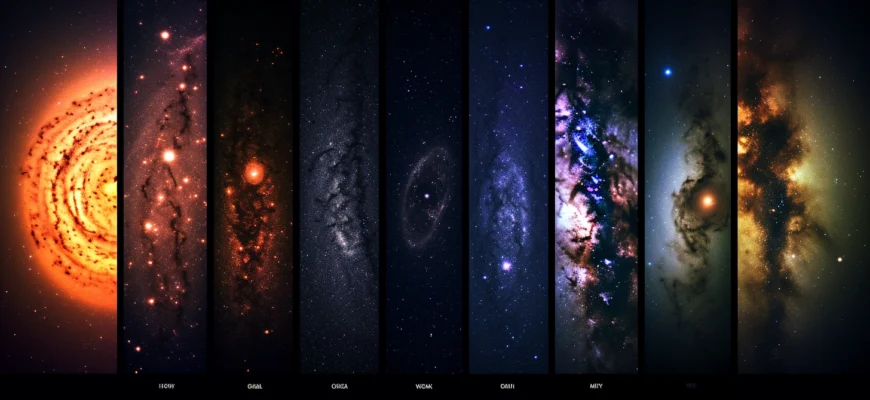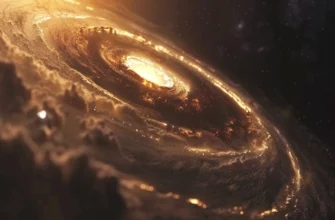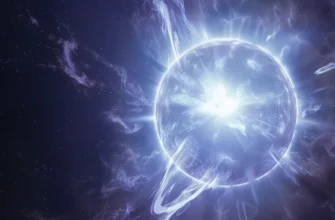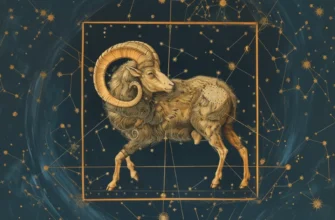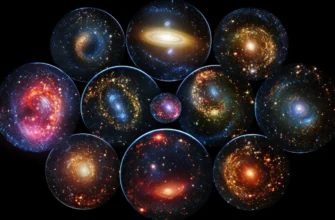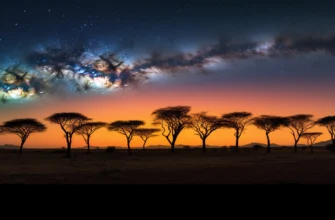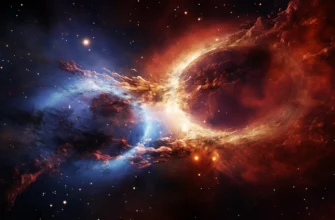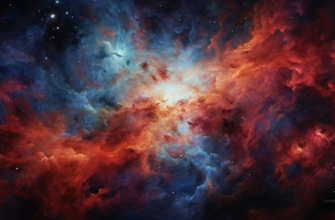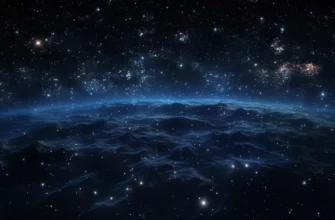The Local Group is the gravitationally bound cluster of galaxies that contains our home galaxy, the Milky Way. While dominated by the Milky Way and M31 (Andromeda Galaxy), it contains over 80 galaxies, most of which are small dwarf galaxies orbiting their larger neighbors. Understanding the Local Group gives us insight into galaxy and structure formation in the universe on the smallest scales.
Spanning around 10 million lightyears, the Local Group galaxies allow detailed observation and study not possible in more distant galaxies. As our closest galactic neighbors, they are a glimpse of the variety of structure and contents seen throughout the universe. Exploring the Local Group galaxies is key to understanding the Milky Way and uncovering the mysteries within our island universe.
- An Island or Part of the Continents – History of Local Group Galaxies Discovery
- Membership Card – What Constitutes the Local Group?
- Citizens of the Local Group Galaxies
- The Local Group Galaxies Duopoly – Tales of the Milky Way and Andromeda
- Let’s look at what makes each galaxie unique:
- Milky Way
- Andromeda
- The Diminutive Dwarfs – What the Tiniest Galaxies Tell Us
- Gas Loss in Dwarf Irregulars
- Stellar Clocks in Dwarf Spheroidals
- Ultra-Faints Push the Limits
- Tidal Dwarf Galaxies
- The Milky Way Moves to Andromeda
- Crash Course in Gravity
- The Coming Merge – United Galaxies of the Local Group
- Set the Calendar Reminder for Galactic Harmony
- The Local Group’s Galaxies Place on the Grand Cosmic Stage
- Galaxies Grow Through Mergers
- The Isolated Island Group
- The Next Page – Writing Future Chapters
- Next Stop Merger – All Aboard
- Ongoing Story
An Island or Part of the Continents – History of Local Group Galaxies Discovery
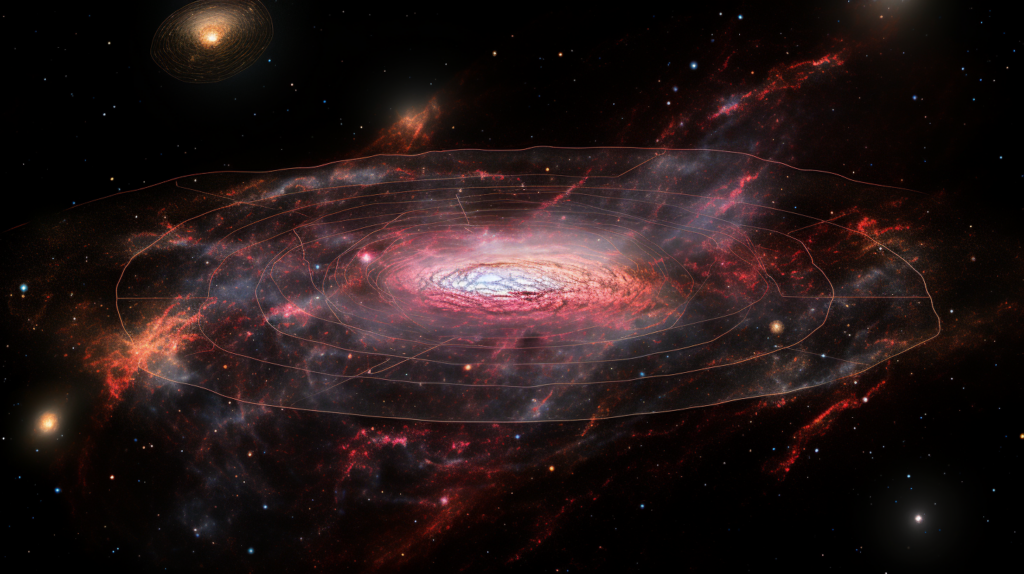
For thousands of years galaxies have been visible as fuzzy objects in the night sky. But only in the past century astronomers have understood the scale and nature of galaxies as “island universes” separate from our Milky Way.
“We live in an island universe of which the Milky Way is the hub.” *- Harlow Shapley 1930*
The idea of “island universes” as galaxies had been growing through the early 20th century. Edwin Hubble provided concrete proof and settled debate in the 1920’s by discovering Cephid variable stars in Andromeda (M31) and measuring its distance as very far outside the extent of the Milky Way.
This established the dimensions and significance of external galaxies. Even more importantly, Hubble showed that these galaxies were moving away from each other – the first evidence of an expanding universe that led to the theory of the Big Bang.

While each galaxy was now understood to be its own system, in 1936 Hubble proposed that the term “Local Group” be used to mean the galaxy concentration that includes the Milky Way and Andromeda which is now understood to have around 80 members.
Detailed study has shown the intricacies of the Local Group galaxies and their histories tied together by gravity over cosmic timescales. Just as early seafaring island hoppers produced maps of island chains, astronomers piece together the structure of our Local Group galaxies.
The Milky Way’s two largest galactic neighbors, Andromeda and Triangulum, may have had a close encounter billions of years ago. The two might even have “danced” together before the tiny Triangulum was flung outward. *- National Science Foundation*
Understanding the dynamics of the Local Group galaxies underpins models of galactic motion and mergers that give insight into galaxy evolution across the universe.
Membership Card – What Constitutes the Local Group?
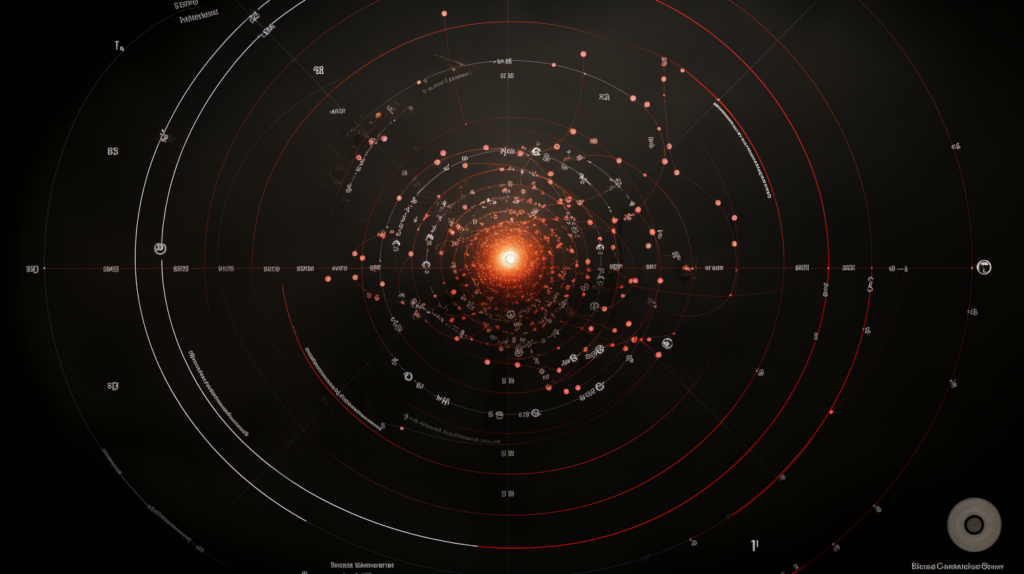
With galaxies spanning millions of lightyears, what determines membership in the Local Group? While walls divide countries and fences make neighbors, gravity defines the boundaries between galaxies and clusters.
The accepted cosmic definition for the Local Group galaxies is that it contains all galaxies gravitationally bound to the Milky Way and Andromeda galaxies. This means their gravitational pull reigns supreme keeping their smaller neighbors orbiting around them rather than escaping.
Applying this leads to estimates of Local Group galaxies dimensions spanning around 10 million lightyears from end to end. While tiny in cosmic terms, this creates a zone dominated by the two heavyweights of the Milky Way and Andromeda each influencing orbits of dozens of lower mass galaxies.
Crucially this gravitational zone also excludes galaxies at slightly larger separations whose motion and trajectory is less tied to the Milky Way and Andromeda duo. So while even more isolated dwarf galaxies may pass through or interact with the Local Group galaxies temporarily, astronomers focus on the galaxies closely and continually interacting.
As imaging and measurements improve, new galaxy candidates emerge within range of Local Group galaxies gravity. Currently there are estimated to be around 80 galaxies considered reliable Local Group members.
Citizens of the Local Group Galaxies
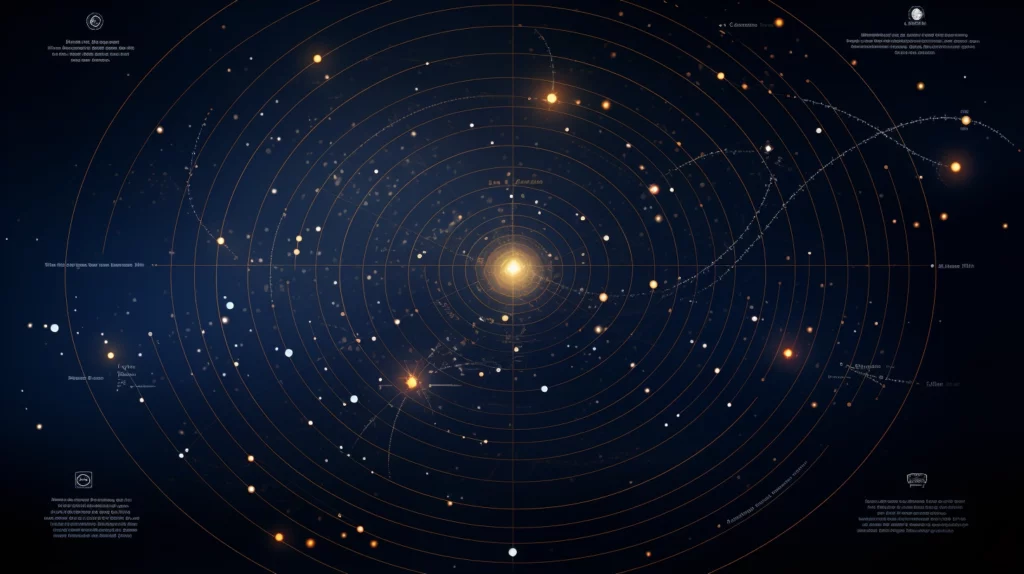
Who makes up the Local Group galaxies apart from the Milky Way and Andromeda? While those two dominate in mass and size, dozens of smaller “dwarf galaxies” call the Local Group home.
Ranging from faint galaxies like dwarf spheroidals to irregular Magellanic-types with patchy structure, these smallest galaxies each contribute their dynamics to Local Group galaxies evolution. They also provide self-contained laboratories for understanding star formation up close.
Different dwarf galaxies hold different clues – from unusual stellar populations and star clusters to signatures of gas loss. Density, location, chemistry, and orbital motion all provide insight. The categories of Local Group dwarf galaxies include:
- Satellite galaxies – orbiting and dominated by Milky Way / Andromeda gravity – Ex: Large Magellanic Cloud (LMC), Sagittarius Dwarf
- Isolated – not orbiting a large neighbor – Ex: Wolf-Lundmark-Melotte (WLM) Dwarf
Proximity allows dwarf galaxies to be mapped and measured accurately including distances, 3D positions, motions, distributions of stars and gas, and connections between young and old stellar populations.
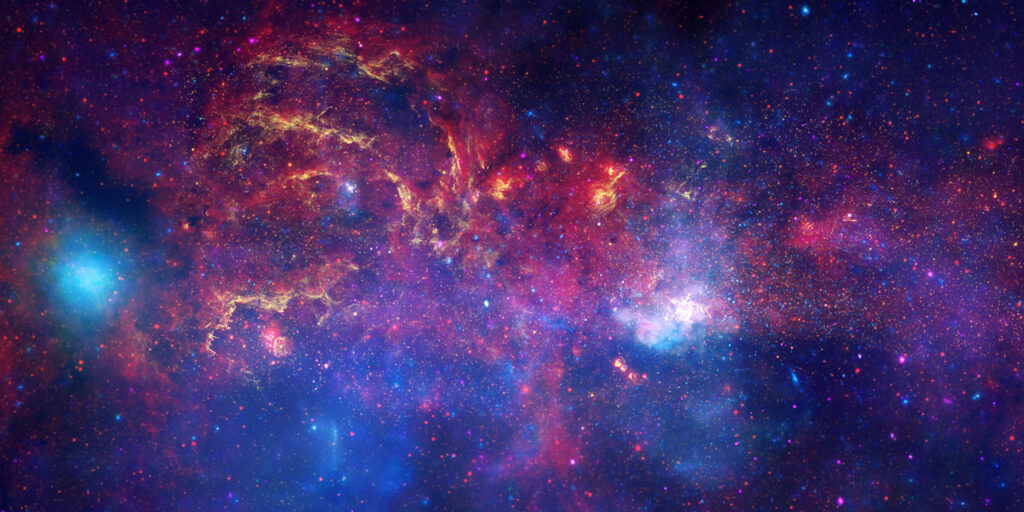
For example, the unusual stretches and streams of stars seen being torn from the disrupting Sagittarius Dwarf reveal interactions with the Milky Way gravity. Other dwarfs show evidence of gas loss indicating potential starvation of star formation.
The dozens of dwarf galaxies span a range of properties and issues facing small galaxies. Each one is a clue in decoding galactic evolution. Local Group members continue to be discovered in deep imaging surveys – ever more candidates that may qualify to join the club of galaxies gravitationally bound to the Milky Way and Andromeda.
The Local Group Galaxies Duopoly – Tales of the Milky Way and Andromeda
While the dwarf galaxies are fascinating, made possible to study only by their Local Group galaxies proximity, there is no overlooking the Milky Way and Andromeda as the dominant galactic engines of the system.
| Galaxy | Type | Mass (Solar masses) | Size (lightyears) | Notes |
|---|---|---|---|---|
| Milky Way | SBc Spiral | 700-1000 billion | Diameter of 100,000 | Our home galaxy |
| Andromeda | SAb Spiral | 700-1000 billion | Diameter of 220,000 | Largest Local Group galaxy |
| Triangulum | Sd Spiral | 50 billion | Diameter of 60,000 | Third largest, possible past Andromeda dance partner |
| Large Magellanic Cloud | Irregular | 20 billion | Diameter of 14,000 | Milky Way satellite galaxy showing strong interactions |
These two dominant spirals have likely influenced each other over billions of years despite their still large separation of 2.5 million lightyears – far enough that Andromeda is faint and blurry to the naked eye on a dark night.
Let’s look at what makes each galaxie unique:
Milky Way
The Milky Way as home to our Solar System shows its structure in unmatched detail. Edge-on from our location we see the glowing band of the galactic plane – a flat disk about 100,000 lightyears in diameter marked by dust lanes showing the locations of spiral arms.
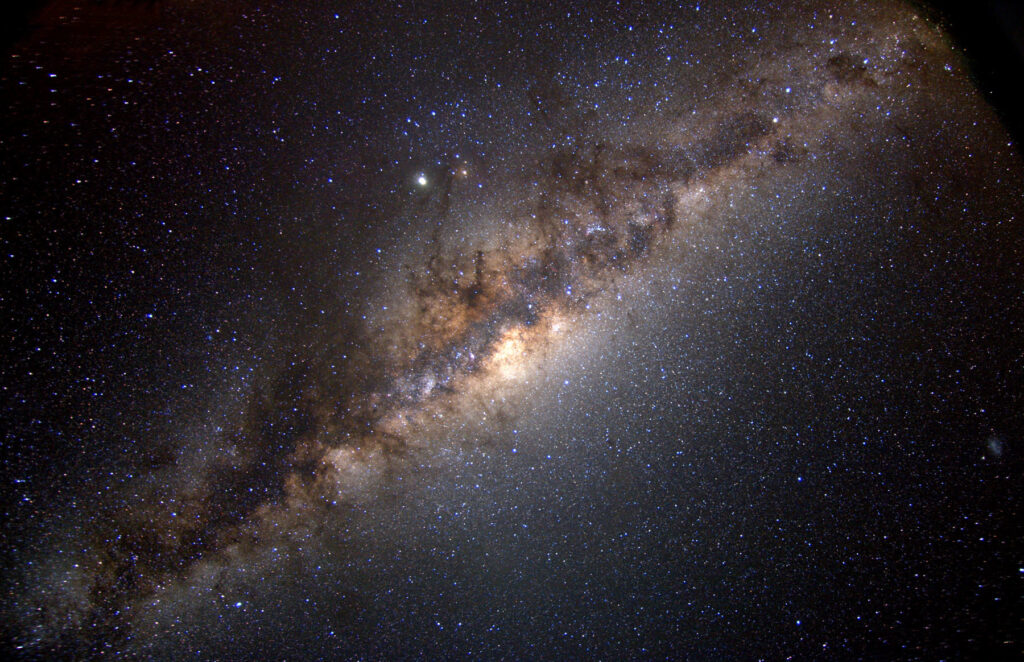
The relatively faint but very large stellar halo and central bulge round out a classic spiral galaxy. However we live in the suburbs – 25,000 lightyears from the Milky Way’s center which hides a bright core around the 4 million solar mass supermassive black hole named Sagittarius A*.
Detailed maps now trace the spiral structure and locations of molecular clouds actively forming new stars especially in the Orion region of the Local Arm. The Sun orbits at 500,000 mph taking 225-250 million years per galactic year while slowly bobbing up and down through the disk every 50 million years.
This offers close and direct measurement of the stellar and interstellar contents and motions within a large spiral galaxy. Gradually a detailed picture is built up from counting stars and gas clouds, tracking orbits of globular clusters and satellites, and inferring the dark matter halo mass keeping everything rotating.
And the Local Group galaxies gives context to compare the Milky Way with its neighbors including leading theories that it formed relatively early before Andromeda.
Andromeda
M31 or the Andromeda Galaxy presents a very different view 2.5 million lightyears distant. Seen as a faint smudge in early telescopes, it covers over 3 degrees of sky making it over 6 times the diameter of the full moon.
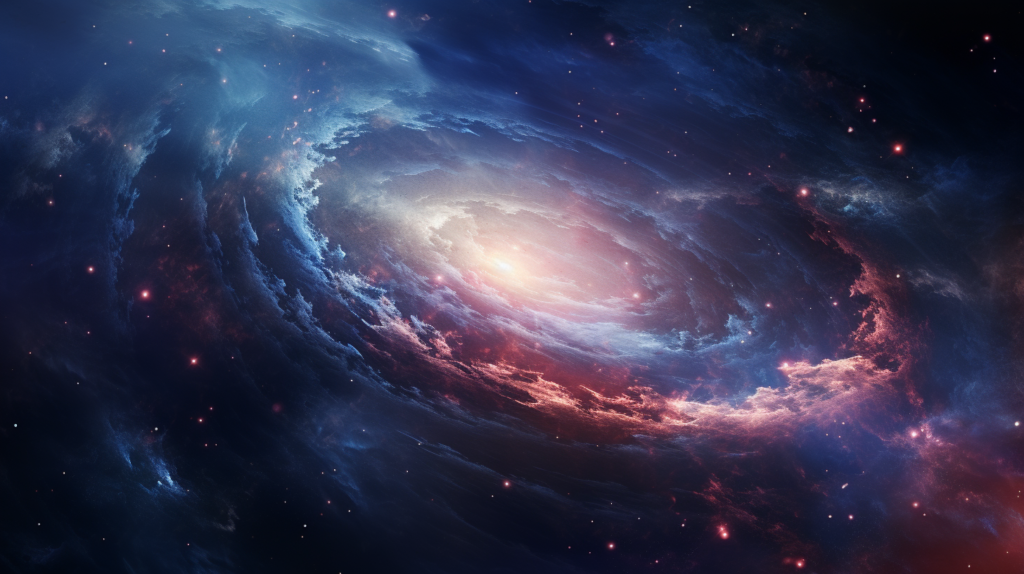
Modern surveys have mapped Andromeda revealing its giant extent – over 200,000 lightyears across – and more than one trillion stars. The small satellites M32 and M110 visible even to amateur telescopes hint at its much larger system of orbiting dwarf galaxies.
Andromeda shines bright enough to be seen by the naked eye as it barrels towards us at 75 miles per second. The expectation is that it will collide with the Milky Way in around 4.5 billion years. Simulations indicate the galaxies will likely merge violently into an elliptical amalgam.
Such galaxy collisions are common over the lifetime of large spirals like Andromeda and the Milky Way – marking dramatic stages in their evolution. And clues are seen already in Andromeda’s past through the unusual giant stellar stream wrapping far out from the galaxy. This indicates a significant disruption such as the past mergers of smaller galaxies into the Andromeda system.
Ultimately the Andromeda and Milky Way stand out as the dominant giant spiral galaxies in the Local Group. The remaining 78 or more galaxies circle around these twin stars in the stellar island chain of our neighborhood. Dwarfed they may be in brightness and size, but the Local Group galaxies diversity still provides many astrophysical insights.
The Diminutive Dwarfs – What the Tiniest Galaxies Tell Us
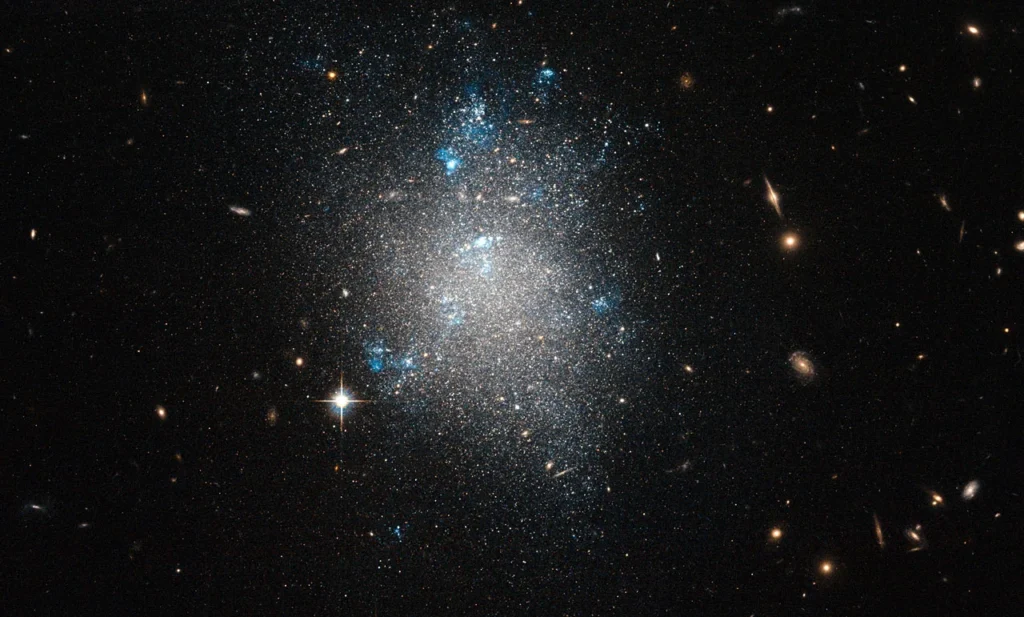
They may contain 1% or less of the stars in the Local Group galaxies, but the dwarf galaxy menagerie represents most of the population. Ranging from faint smudges like Leo T dwarf at just 1 million solar masses down to ultra-faint dwarfs like Segue I at 1000 solar masses, together they shine light on galaxy evolution and limitations.
Also falling into the dwarf galaxy category are unusual ellipticals like compact M32 orbiting Andromeda to the irregular structures of the Large and Small Magellanic Clouds prominently featuring in southern hemisphere skies as Milky Way satellites. The Magellanic Clouds demonstrate ongoing distortion due to gravitational interactions.
The common themes seen help explain why star formation drops off below certain galaxy mass thresholds and what interactions with large galaxies do to their smaller counterparts. Let’s look at critical discoveries made in Local Group dwarfs:
| Dwarf Type | Examples | Key Discoveries |
|---|---|---|
| Dwarf Irregulars | WLM, Pegasus Dwarf | Gas loss preventing star formation |
| Dwarf Spheroidals | Draco, Sculptor | Stellar populations showing early galaxy formation |
| Ultra-faint dwarfs | Segue I and II | Least luminous and low mass galaxy examples |
| Tidal dwarf galaxies | Pisces A and B | Formed by gas expelled during galaxy collisions |
Gas Loss in Dwarf Irregulars
The dwarf irregular category shows very patchy structure and activity instead of spiral arms or spherical shape. Representative members like the WLM and Pegasus dwarfs reveal details on what leads dwarfs to stop forming stars.
Deep observations show large amounts of gas is missing from these galaxies that their gravity should have retained. Likely stripped away by supernova winds and radiation pressure, these dwarfs lost key ingredients for star formation. Their remaining gas to stars ratio echoes larger more fragile galaxies observed in the distant universe.
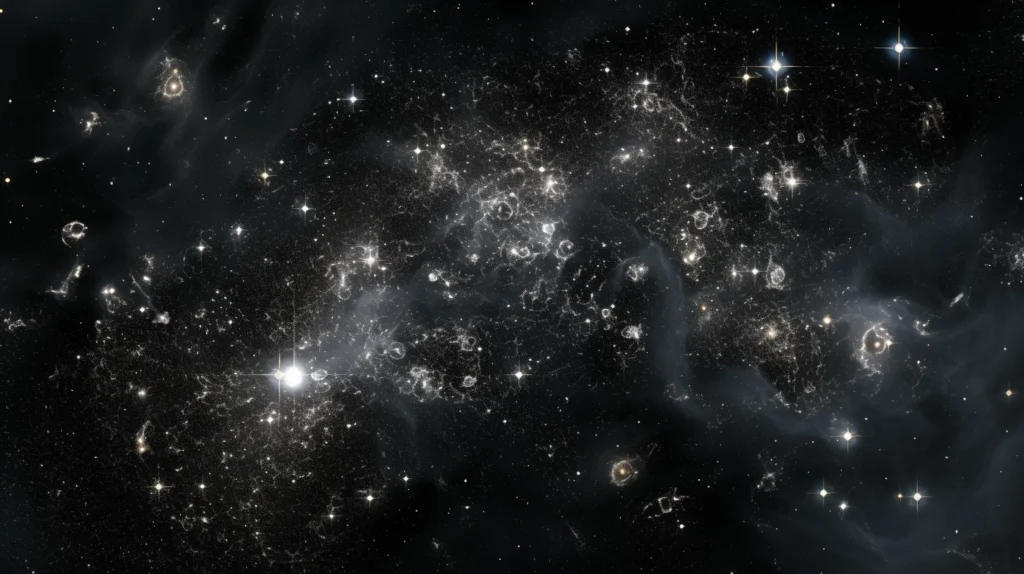
Studying the threshold between dwarf galaxies that retained gas reservoirs to continue modest star formation like WLM versus those stripped early gives insight into their susceptibility to internal and external factors driving their evolution. Like canaries in the coal mine, nearby dwarfs show the fate awaiting low mass galaxies across the cosmos.
Stellar Clocks in Dwarf Spheroidals
The misnamed dwarf spheroidals are still disk galaxies despite their round apparent shape. With more spherical structure than spiral galaxies, they contain almost exclusively old stars showing they formed early and quickly used up their gas.
Prime examples orbiting the Milky Way like the Draco and Sculptor dwarfs reveal ancient stellar populations over 10 billion years old. These red giant stars act as precise clocks marking the early years of the universe. The spheroidals give insight into early stellar mass assembly when compared to stellar ages and compositions in the Galaxy’s globular clusters.
Tracking the motions and distributions of old stars shows the ongoing disruption of dwarf spheroidals. Tidal forces and gravitational encounters with our Galaxy slowly tear them apart. Streams of stars spreading along orbits mark this destruction visible in the Sagittarius Dwarf currently merging with the Milky Way.

These fragile relics light the way towards understanding hierarchical galaxy build-up from smaller galaxies early in the universe. Their old stars tell tales of the Milky Way’s own history.
Ultra-Faints Push the Limits
Not even visible without sensitive digital sky surveys, ultra-faint dwarf galaxies orbiting the Milky Way represent the extreme low-mass frontier of galaxy formation environments.
With just thousands or tens of thousands of stars they show remarkable consistency from one to another in stellar make-up and histories. Dark matter appears to dominate their mass by factors of 100-1000 times more than their faint stars.
Ultra-faints demonstrate how dwarf galaxies serve as dark matter laboratories – their motion and distribution of their few stars reveals the underlying large dark matter content. This makes dwarfs ideal for mapping out dark matter even down to the smallest collections of stars still deserving the “galaxy” designation.
Arguments continue as to whether ultra-faint dwarfs represent a unique new galaxy category or the low-mass extension of the sequence of dwarf types. Either way they provide constraints on how small a dark matter halo can become while still pulling in enough gas to form even a first generation of stars born soon after the Big Bang.
Tidal Dwarf Galaxies
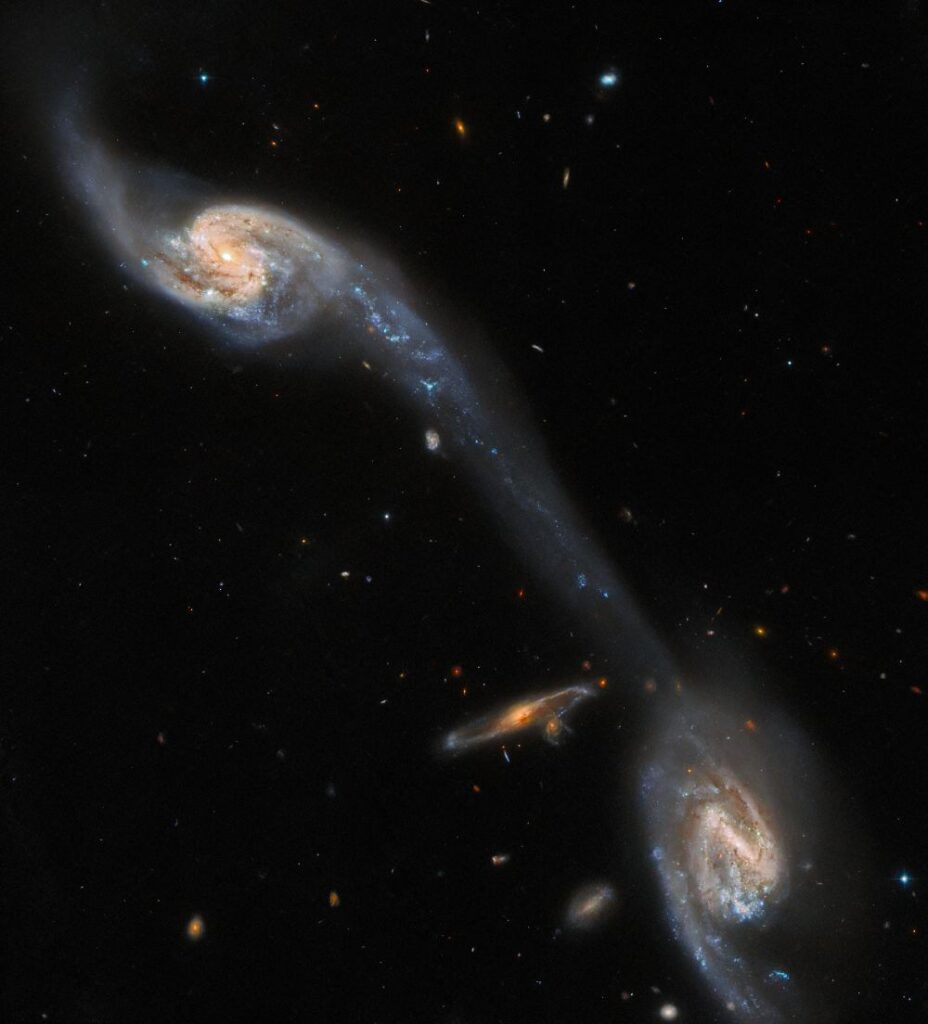
Not all Local Group dwarfs must hail from tiny dark matter halos carved out early in the universe. Tidal dwarfs form from debris flung out during galaxy collisions involving larger galaxies like the Milky Way and Andromeda.
Gas and dust expelled during mergers can collapse under its own gravity into new stellar systems termed tidal dwarf galaxies. And the disturbed Magellanic Clouds nearby show signs this mechanism may be creating the dwarf galaxies Pisces A and B trailing behind their orbits.
Unlike dark-matter-dominated dwarfs, tidal dwarfs dynamics are governed more by normal matter that was pulled out from disk galaxies. These represent a top-down galaxy formation sequence compared to early universe build-up of low mass halos.
Further study of Pisces dwarfs and other potential tidal dwarfs around Local Group galaxies will help uncover if they represent a rare or common dwarf galaxy origin channel – one of the many galaxy evolution pathways hinted at in our backyard.
The Milky Way Moves to Andromeda
Lest we think of galaxies as static places with neatly orbiting satellites, our Local Group galaxies reveals lots of action on cosmic timescales.
The Andromeda Galaxy and our Milky Way highlight that even giant galaxies continue evolving across billions of years. And the two giants are just at the start of their most dramatic transformation yet as they hurtle together on an eventual collision course.
Crash Course in Gravity
The Local Group galaxies provides a gorgeous example of gravity at work shaping cosmic structures spanning millions of light years. At its heart the Milky Way and Andromeda play out gravitational attraction and orbits writ large.
Though now still separated by 2.5 million light years, the two have been linked together for billions of years as the dominant galaxies at the center of our Local Group island. it is their gravity budgets that set the “membership criteria” in holding court over the dwarf galaxies buzzing around them.
But as their dance nears, enormous galaxy-scale forces are set to directly impact structural changes beyond the dwarf galaxy contortions seen so far. In around 4.5 billion years the Milky Way and Andromeda will dramatically merge into single galaxy.
Such galactic crashes represent pivotal milestones for giant galaxies – likely many are already in Andromeda’s past history. Simulations now forecast their upcoming dance steps as Andromeda barrels in at 75 miles per second.
The Coming Merge – United Galaxies of the Local Group
Computer simulations help visualize the upcoming cosmic collision as Andromeda and Milky Way gravitationally mash together into one merged system. Progressively looping together on each pass, tidal forces will tear out streamers of gas and stars.

In around 4-5 billion years the cores will merge and relax into an elliptical shape surrounding by leftover debris – the remnant of two beautiful spiral galaxies. The unified galaxy will shine bright from rapid bursts of new star formation triggered as abundant gas slams together and collapses under its own weight.
While visually stunning, galaxy mergers represent pivotal milestones in galactic evolution. They dramatically transform structure while accelerating star birth and growth of central supermassive black holes. Our Milky Way and Andromeda are bound for this disruptive treatment in the near cosmic future.
Set the Calendar Reminder for Galactic Harmony
If around to witness the merger, any observer in the Local Group galaxies would see quite a show spread over hundreds of millions of years after Andromeda first looms closer than the Milky Way’s satellite galaxies.
The incoming blue glow and increasing brightness sparked by new generations of stars will signal the galaxies intertwined fate. Tides of gravity distort and begin tearing the galactic disks as they pass through one another – gradually reforming into an elliptical shape surrounded by debris from their destructive gravitational dance.
The unified galaxy surrounding by glittering remains will represent the new center of the Local Group galaxies – still orbited by dwarf galaxies like glasses clinging around a shaken martini.
The Local Group’s Galaxies Place on the Grand Cosmic Stage
While galaxy collisions mark milestone events on billion year timescales for individuals galaxies like Andromeda and the Milky Way, they represent common rites of passage rather than exceptions in the overall march of cosmic evolution traced by astronomers.
Galaxies Grow Through Mergers
Modern galaxy surveys reveal that mergers, both major and minor, dominate the growth in stellar mass and size over time especially for large spirals fated to become giant elliptical galaxies. The lessons of the Local Group galaxies apply to how galaxies across the universe build up to become giants.
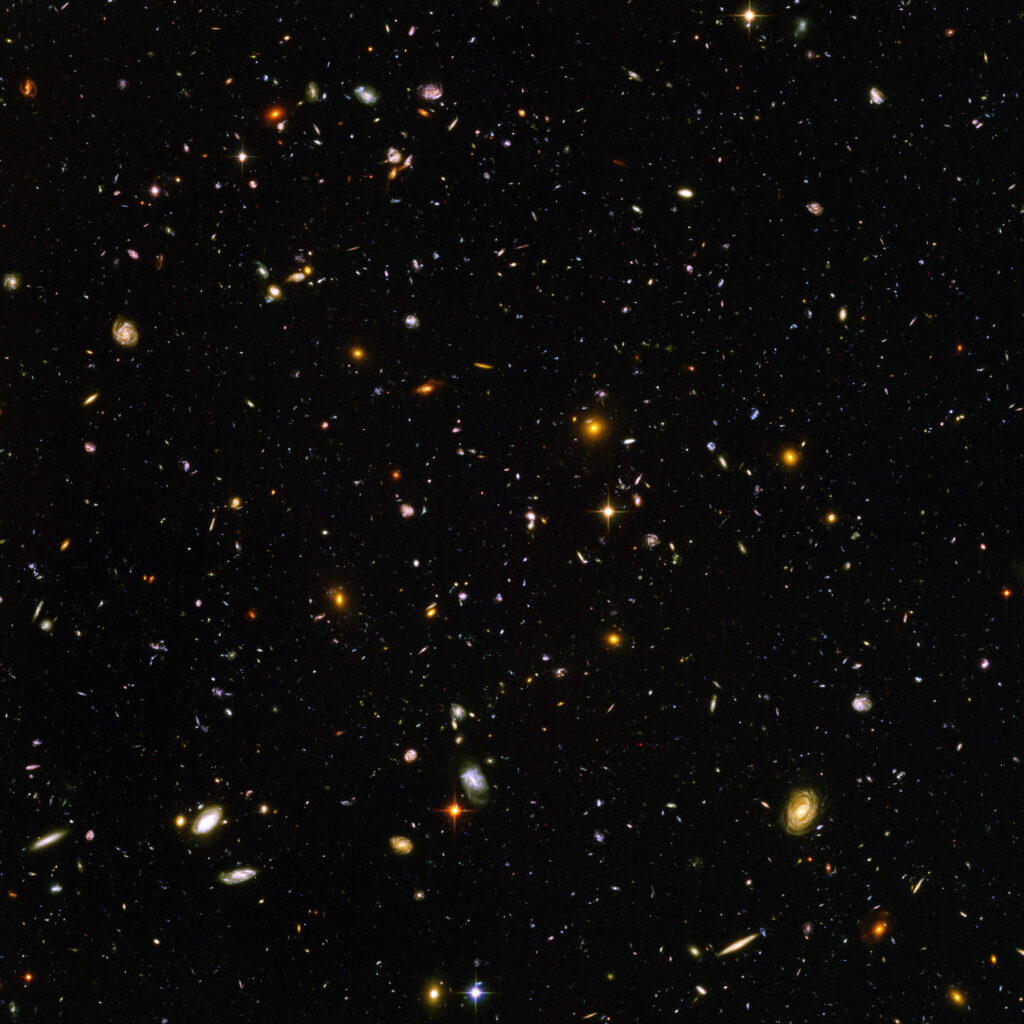
Over 90% of the current stellar content in massive galaxies formed in smaller galaxies billions of years ago that have since merged together. At early stages the familiar Hubble sequence of beautiful spirals gives way to disorder and asymmetry indicating rampant merging activity.
So while marking the end of standalone life for Andromeda and the Milky Way, their collision will also birth a new galaxy whose structure echoes many massive ellipticals seen throughout the cosmos. Gravity drives mergers which build galaxies over the eons.
The Isolated Island Group
Stepping back the Local Group galaxies also fits into the vast web of cosmic structure traced by astronomy surveys mapping millions of galaxies across space and time.
Groupings and clusters of galaxies represent the largest scale artifacts of gravity pulling matter into knots and filaments over 14 billion years since the Big Bang sparked expanding space itself. This cosmic web spans hundreds of millions or even billions of lightyears between galaxy concentrations.
Some galaxy groups like our neighbors Centaurus A and M83’s group lie around 10 million lightyears beyond the Local Group galaxies. But in terms of the next truly massive galaxy cluster, we must travel over 40 times further – 10 times farther than even Andromeda – to meet the Virgo Cluster containing over a thousand galaxies.
So relative to the giant web traced by cosmology, our Local Group galaxies stands out as an isolated island with only small nearby galaxy associations. The merging of the Local Group’s two dominant spirals into a giant elliptical will produce a galaxy archetype whose likeminded brethern tend to occupy the busiest hub regions of the universe where galactic dances are common.
The Next Page – Writing Future Chapters
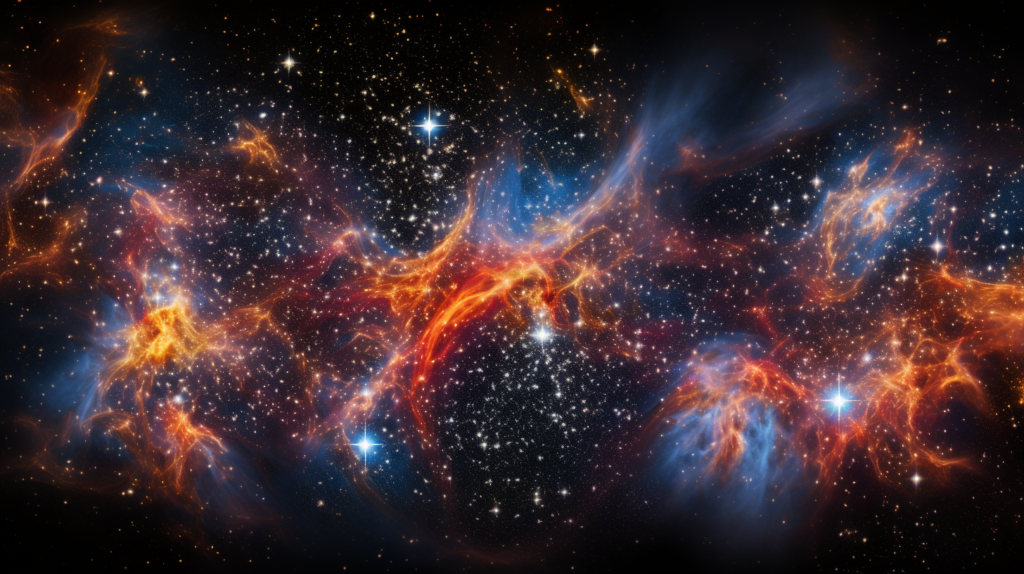
The Local Group galaxies story represents one among galaxies beyond number, each with their own histories unfolding. But lucky for astronomers, ours is the chapter written large across the sky for decoding, future steps included.
While galaxy collisions mark widespread catalysts for change traced back over 13 billion years since their formation, more gentle interactions also continue shaping Local Group members. Even as they fall inwards toward the Milky Way, the Magellanic Clouds demonstrate the power of gravity to distend disks and spark new generations of stars.
Careful observation across wavelengths from radio to X-ray reveal these processes at work – as well as evidence of the cosmic web filaments still funneling in gas to replenish Milky Way reserves. Detailed numerical simulations now match complex stellar streams and warping observed.
Theory and experiment combine to read both the current dynamical state as well as past evolution. Together they provide the initial conditions for calculating the Local Group’s future dance steps leading up to the Milkomeda merger and beyond.
Next Stop Merger – All Aboard
With Andromeda’s path established, simulations explore the loss and reconstitution of spiral arms as the galaxies tear through each other. These nonlinear waves depend sensitively on mass distributions which observations now characterize down to dark matter dominated dwarf galaxy scales.
Timing and details may shift, but the Local Group galaxies now race towards their widely accepted destiny entwined. After passage through green valley merger transition, simulations match the luminous red massive elliptical endstate that will dominate future Local Group galaxies skies for billions of years.
Ongoing Story
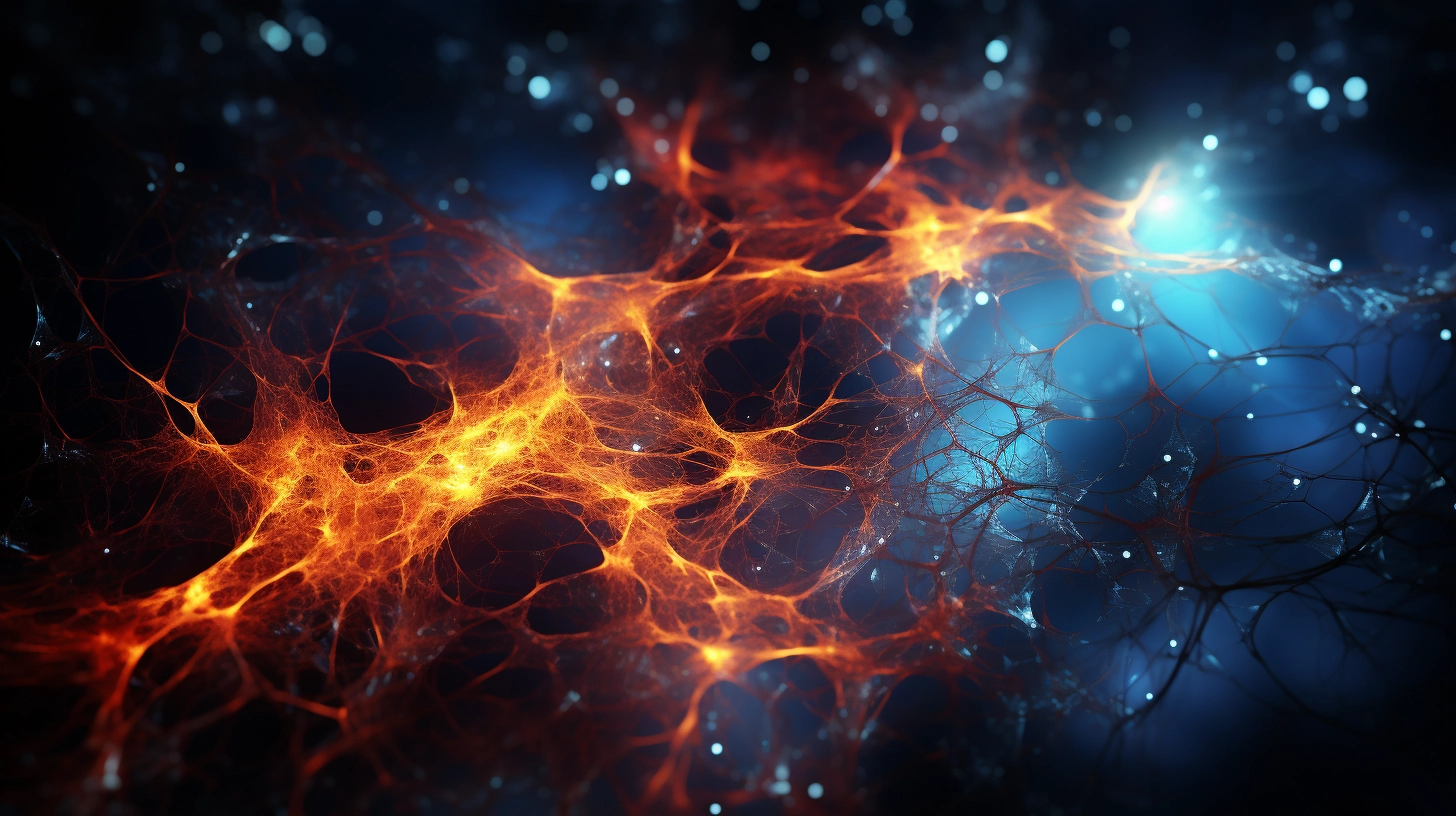
Yet chances for drama will not cease after the Milkyomeda merger concludes. Gravitational upheaval can spur rejuvenated star formation even as spiral structure merges into an elliptical form.
And sequels always contain new characters – perhaps future galaxy clusters or associations may some day fall into the Local Group galaxies introducing fresh neon signs to light a merged elliptical galaxy alive with new stellar nurseries. There is more yet to watch for in the sky’s longest running soap opera.
The Local Group represents our grandest stage to showcase the story of galaxies that unfolds across the universe. Act I galaxies set the stage, their mergers drive Act II’s drama before mature galaxies populate Act III’s denouement. Study of our nearest galaxies directly witnesses gravity choreographing these steps of cosmic evolution.
Future telescope projects like the Vera Rubin Observatory’s Legacy Survey of Space and Time (LSST) promise to unveil deeper details across Local Group galaxies. Reaching below the tip of the iceberg down to the faintest dwarf galaxies, stellar streams from ongoing mergers, and potentially undiscovered galaxies or surprises, LSST opens new pages in our closest galaxy saga.
Within reach lies the capability to shift Local Group galaxies modeling from simple gravitational simulations to fully hydrodynamic calculations predicting detailed astrophysics. Advances in computing power and galaxy survey data will soon allow accurate forecasts for how bursts of star formation and central black hole growth unfold.
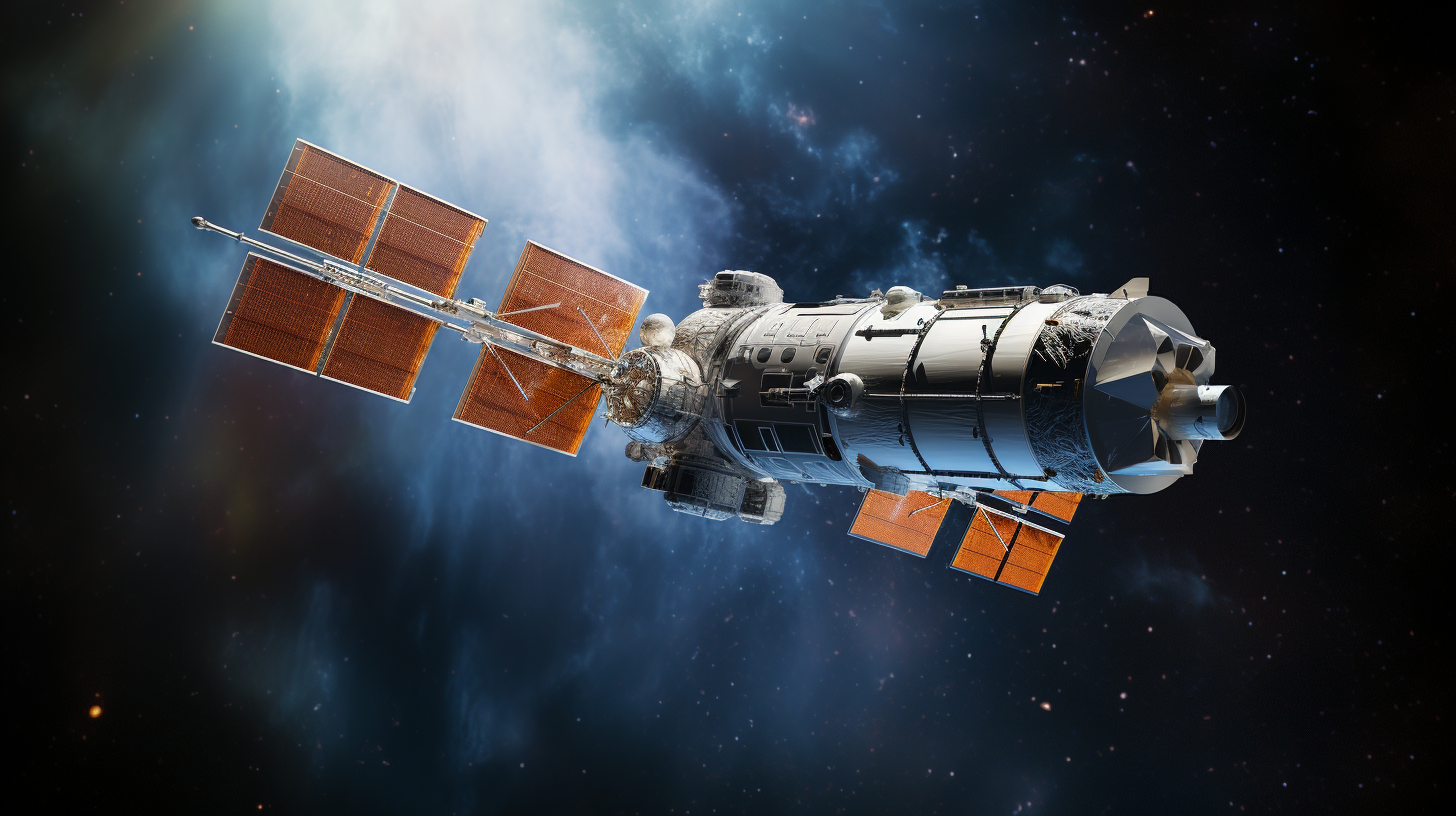
Ultimately galaxies beyond the Local Group galaxies represent the main stage for testing predictions of galaxy evolution gleaned from our neighborhood patch where we can decode the nearest systems. Our Island Group directly touches the whole history of cosmic structure formation and future astronomical progress.
So keep watching the space – the sky provides box seats to the greatest show around. Act II of the Local Group galaxies merges into Act III as our scientific understanding matures along with astronomical technology advances. We stand poised to witness our neighboring galaxies script the future even as they reveal hidden backstories that shape our current place in the universe.

